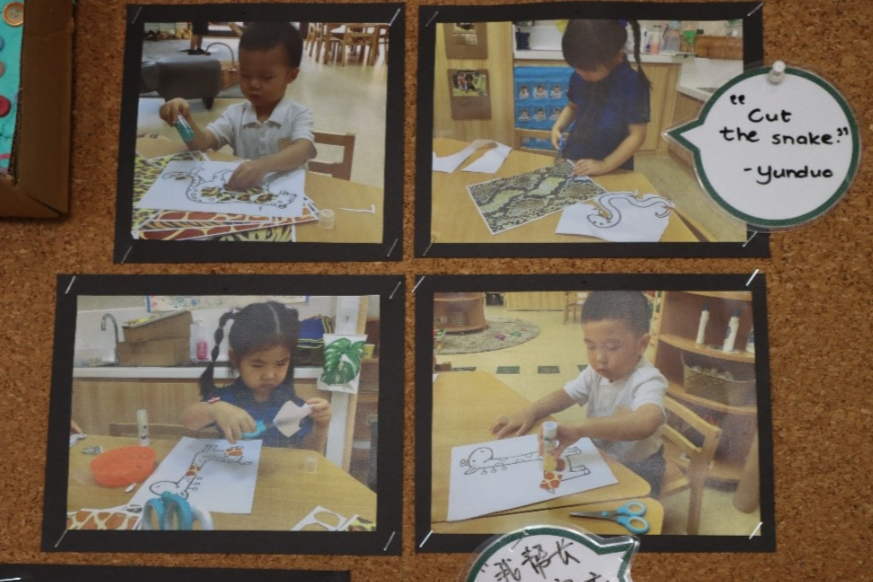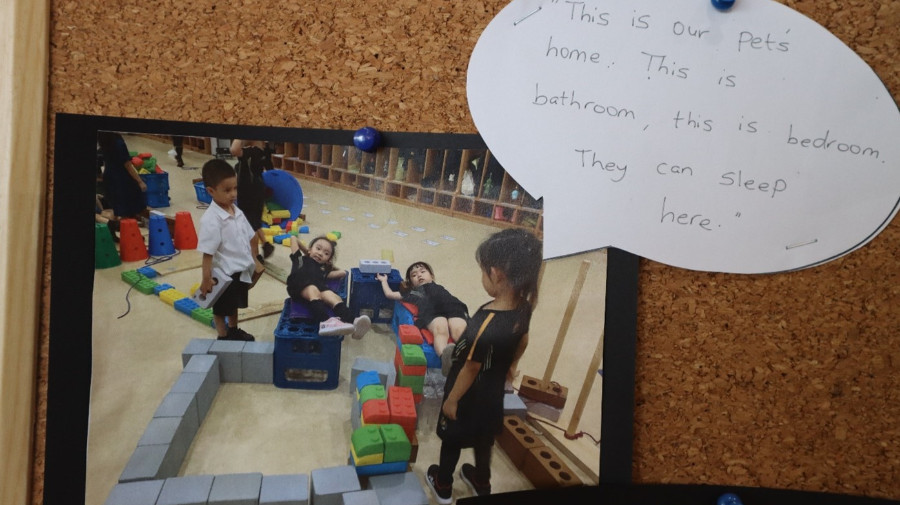
The bilingual education at nursery provides an immersive environment for children to become proficient in both Chinese and English. How is that practised in our daily teaching? Let's take a look at the bilingual carpet time as an example of our teaching practice.
Bilingual carpet time
Every day, we have at least one 15-to-30-minute session of 'bilingual carpet time'. Children sit on the floor with their Chinese and English teachers and spend time interacting in both languages.

The teachers speak their own respective languages, asking children questions and talking with them about topics related to their in-class learning. The children will often hear bilingual stories, sing songs or play games.
There are no interpreters for the pupils; it is an immersive experience. However, as the children progress, they often become interpreters themselves! Many of our EY3 and EY4 pupils become proficient enough in both languages that they help the English-speaking teachers understand what is being spoken in Chinese.
Measuring teaching outcome from pupil voice
If you visit our setting, you will find that every wall has a record of the words our children are using. They are accompanied with both Chinese and English definitions. Our teachers record these in various media throughout the day as our children explore the nursery's various areas and learn through play.

We call this 'pupil voice'. It is a way to track how our pupils are progressing in their language acquisition. The following photos are documents of how our pupils are constantly growing their vocabularies and communication skills in the classroom at Hiba Academy Shanghai.



The 'pupil voice' helps our teachers to find points of interest that might further engage our pupils and encourage them to learn more.